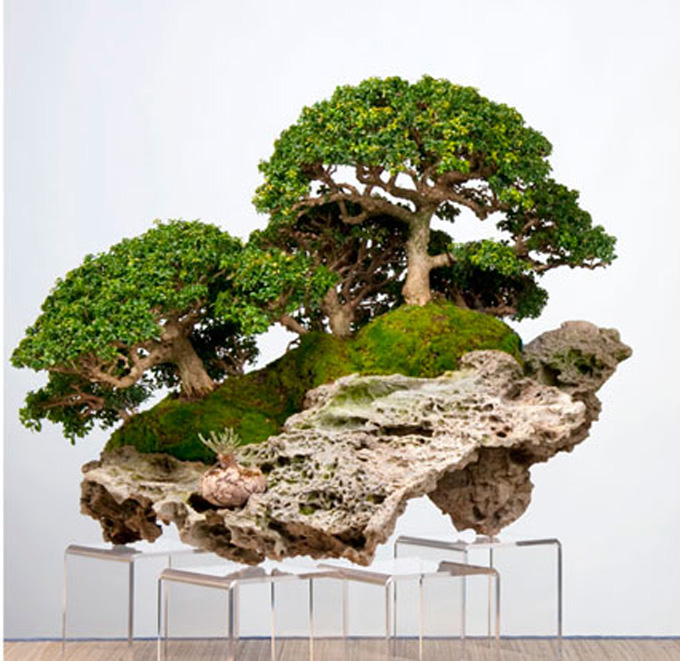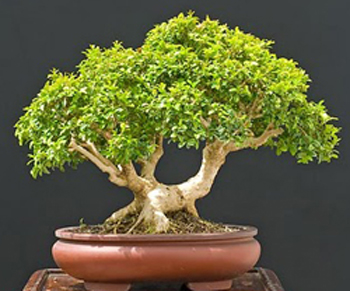 This Dwarf Kingsville boxwood planting by Boon Manakitivipart was the winner of the Certre Award at the 2010 U.S. National Bonsai Exhibition. However, this is not the photo that appears in the Exhibition Album. Rather, it’s a cropped version of a photo that appears on Boon’s website. There’s a story behind this tree, but you’ll need the 2010 Exhibition Album if you’d like to read it.
This Dwarf Kingsville boxwood planting by Boon Manakitivipart was the winner of the Certre Award at the 2010 U.S. National Bonsai Exhibition. However, this is not the photo that appears in the Exhibition Album. Rather, it’s a cropped version of a photo that appears on Boon’s website. There’s a story behind this tree, but you’ll need the 2010 Exhibition Album if you’d like to read it.
The first two photos in this post are the best I could do after a web search for photos of Dwarf Kingsville boxwoods. The reason for this dearth is that true Dwarf Kingsvilles grow very, very slowly. So slowly that they never develop anything near those massive muscular trunks that most exhibition quality bonsai display.
Two solutions to the size problem are shown here. The first solution is plant a group of Dwarf kingsvilles (above). The volcanic rock provides some extra heft and character, which certainly doesn’t hurt. It also doesn’t hurt that the individual trees are forty years old and that the planting was done by a very accomplished bonsai artist.
The second solution (immediately below) is to find a perfect stock plant (field grown in this case) and then cut away growth that obstructs the view of the tree’s essential beauty. No wire or carving tools necessary. Just a good eye and enough wisdom to know when to stop.
 Simple and sweet. A great pot and the finishing touches that the moss and soil present, don’t hurt this delicious little bonsai at all. This photo originally appeared on the cover of Bonsai Today issue 107. The tree belongs to Michael Persiano (co-editor of our Masters’ Series Pine book). You can see and read about its earlier stages of development in Bonsai Today issue 97.
Simple and sweet. A great pot and the finishing touches that the moss and soil present, don’t hurt this delicious little bonsai at all. This photo originally appeared on the cover of Bonsai Today issue 107. The tree belongs to Michael Persiano (co-editor of our Masters’ Series Pine book). You can see and read about its earlier stages of development in Bonsai Today issue 97.
 You can rest assured that some significant time has passed since this little tree was a cutting. Dwarf kingsville trunks this thick are quite unusual. The photo is from Chinese Bonsai Garden.
You can rest assured that some significant time has passed since this little tree was a cutting. Dwarf kingsville trunks this thick are quite unusual. The photo is from Chinese Bonsai Garden.